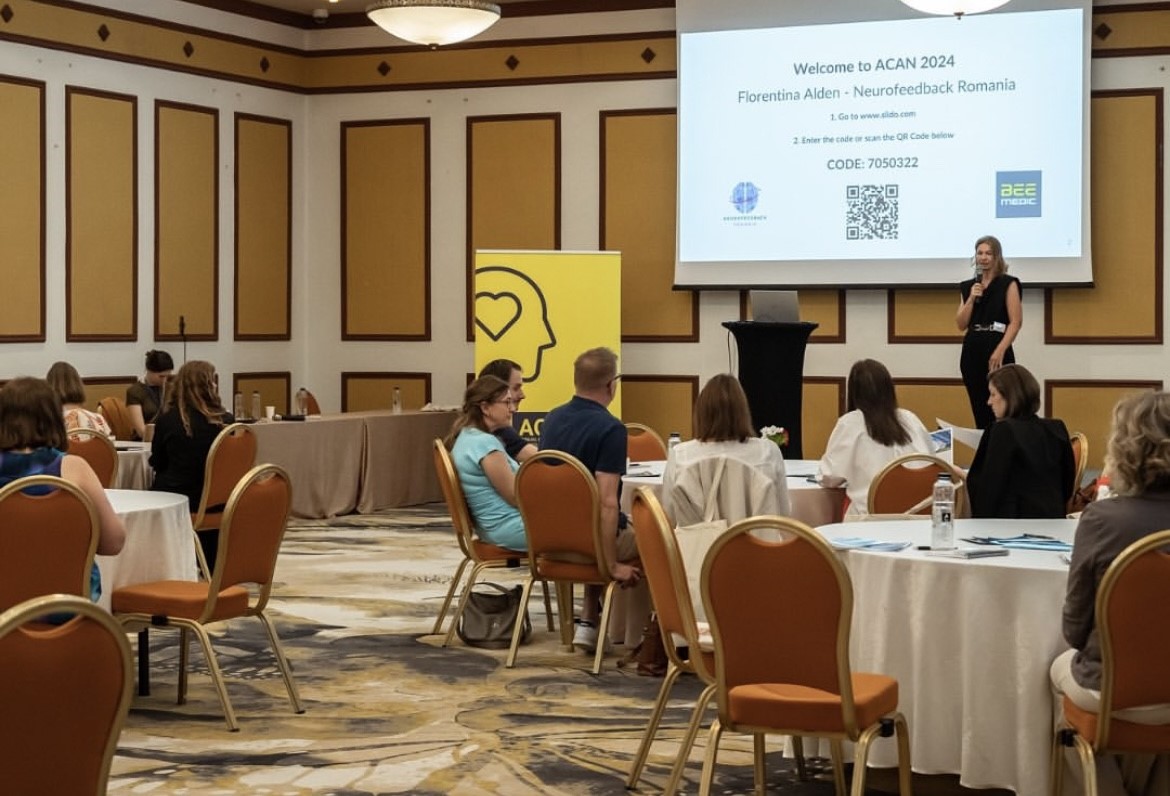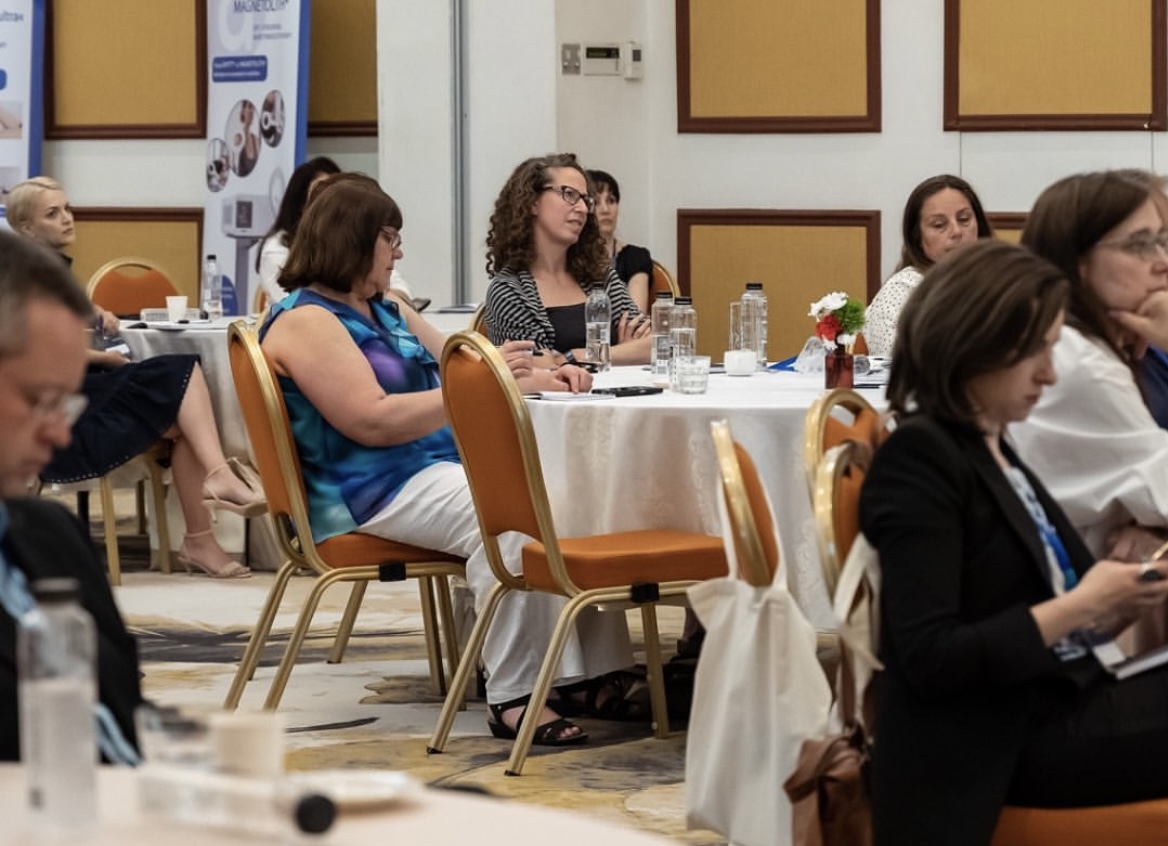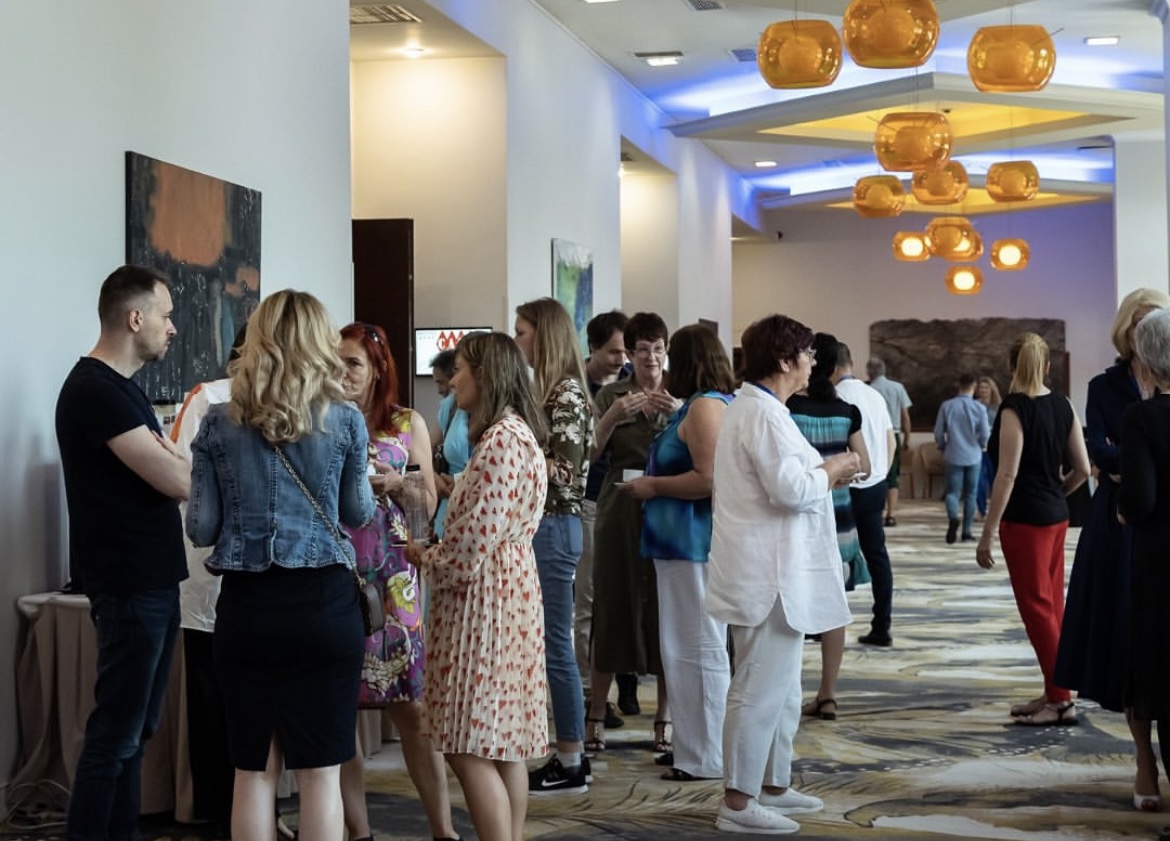“THIS FEELING OF BEING WITH YOURSELF, BEING GROUNDED, BEING CALM [...] IS SOMETHING THAT WE ALL NEED.” ABOUT THE APPLICATION AND USE OF SYNCHRONY TRAINING - AN INTERVIEW WITH MEIKE WIEDEMANN
We conducted an interview with neurobiologist and neurofeedback expert Meike Wiedemann on the subject of synchrony training. She explains what synchrony training actually is, why it is a method of self-care and how it can be combined with alpha-theta training.
BEE Medic: Hi Meike, thank you for taking the time for another interview with us. Today we would like to talk about Synchrony training. What exactly is Synchrony training?
Meike: We have been working with Synchrony Training since 2014. In this form of Neurofeedback, we promote synchronous activity across two areas in the brain, just like in Alpha-Theta-Training. We have used this kind of training extensively, oftentimes in preparation for Alpha-Theta training. Within the Synchrony application we have different training capabilities, depending on the desired training outcome. We can choose to train in the upper ILF range at 0.05 Hz, but we can also train 10 Hz or 40 Hz Synchrony. Those different frequencies have different training effects and address different areas and networks. We train 0.05 Hz on the midline, to achieve more calming, grounding and to restore one’s core sense of self and early attachments. It therefore has a great impact on the relationship with oneself and thus also on the relationship with others. Alpha (10 Hz) Synchrony training, like Alpha-Theta-Training, would be trained in the posterior areas of the brain for more calming and a relaxed focus. Then we have the Gamma (40 Hz) Synchrony, trained in the anterior areas of the brain especially for increased mental clarity and focus. The therapist then has the option of selecting the most beneficial training for the patient.
The difference between Synchrony and Alpha-Theta training is that the Synchrony training is done sitting upright and with eyes open, more like mindfulness training. The emphasis in this application is on the audio feedback, which makes the approach suitable even when clients close their eyes. This offers a viable option to clients who are not yet comfortable keeping their eyes closed, as is the case in Alpha-theta training. With Infra-Low Neurofeedback clients are used to keeping their eyes open, talking to us and watching animations. And then they are supposed to close their eyes during the Alpha-Theta-Training? This is something very intimate for some people. Synchrony training prepares clients and allows us to build the trust needed for Alpha-theta training. During that training clients will close their eyes and completely let go of conscious control to allow the brain to find resolution of trauma.
While promoting synchronous states in Synchrony and Alpha-Theta brings significant benefits to clients, this kind of training might not be tolerated by all individuals. People who present with major instabilities, which show up in Neurofeedback as seizure-like symptoms, such as migraine, epilepsy, panic attacks, or bipolar mood swings, can be triggered by synchronous states, so one must be careful with clients with instabilities. One advantage of the Synchrony modality is that it can be done in short increments of time, five- or ten-minute sessions showing great benefits and allowing us to test the clients’ tolerance of this kind of training. Any instabilities that occur can be addressed afterwards through ILF awake-state training. If the client tolerates the Synchrony training well, then the duration of the sessions can be increased, according to the client’s preference, although, for most people ten minutes of Synchrony is enough to reap the benefits.
BEE Medic: Is it necessary to do ILF neurofeedback before introducing Synchrony training?
Meike: The ILF training is always the foundation, and the Synchrony training builds on it. If the patients have a great effect, then of course you keep that and say 'Okay, now I would like to reach even deeper and enable processing of even more things', then the Alpha-Theta-Training can be added. The individuality of Synchrony training is demonstrated by the fact that some clients love it and benefit greatly from it and have the feeling of being grounded within themselves and their environment, a feeling that many clients have completely lost. If we achieve that with the training, then that's fantastic and then you don't necessarily have to move on to Alpha-Theta training. Some patients respond very well to Synchrony training, whereas with Alpha-Theta training they say: "It was nice and relaxed, but that's all that happened" - with other clients, of course, it can be the other way around. The therapist can then work with the individual to determine the most appropriate training approach.
BEE Medic: You mentioned synchronous states. What are those?
Meike: In essence, synchronous means that the brain wave oscillations are similar at different places in the brain, i.e. right and left hemispheres or the front and the back. When we train in a training band, for example Alpha, the more we do the same thing on both sides at the same time, the higher the amplitudes of the feedback - that is, the more we really swing simultaneously in a regular pattern. So, if the amplitude goes up at one site, it goes up at the other, and if it goes down at one site, it goes down at the other. You can imagine this like two sinusoidal curves that are exactly in-phase, their ebbs and flows coinciding in time. Desynchronized would mean they are out-of- phase. With ILF awake-state training, we promote desynchronized states, while with Synchrony and Alpha-Theta training, we promote in-phase activity in resting states.
BEE Medic: Who benefits from Synchrony training?
Meike: Like it is the case with the Alpha-Theta-Training, every person can benefit from Synchrony training if they tolerate it well. This feeling of being with yourself, being grounded, being calm, being comfortable with yourself and being comfortable with other people - we all need that. The 40 Hz Synchrony training for example, done mostly in the prefrontal cortex, tends to promote meditative states. For some people it's a way of clearing the mind so that there are really no thoughts at all. It's very similar to what we can experience in some states of meditation. And as I said, all clients with whom I would like to pursue Alpha-Theta training later, would do the Synchrony training as preparation for that. People with instabilities might have problems tolerating Synchrony and/or Alpha-Theta training. Again, you need extensive preparation with the ILF training, to avoid abreactions. This can happen if not enough ILF-HD training is done to stabilize brain function, because the brain might experience too much synchronous activity, which can trigger instabilities, such as migraines or panic attacks or dissociation. People who are not yet able to properly let go and relinquish control do not benefit as much from Synchrony training because they are internally resisting it and are not yet able to engage with it
BEE Medic: Synchrony or Alpha-theta training is not used for specific indications, but you decide from person to person whether you want to use these techniques, right?
Meike: In principle, after taking a detailed medical history and tracking the symptoms, we draw up a treatment plan based on the symptoms, the developmental history and, above all, the problems that the person describes or the goals they want to achieve. We use the treatment plan to decide what type of training might be useful, e.g. which training placements we would like to use to address the symptoms and achieve the training goals. The treatment plan includes Synchrony and/or Alpha-Theta if we decide based on the anamnesis that they might be useful for the client. Whether it is still necessary or whether the person has already achieved their goals with ILF-HD awake-state training alone, it can all be decided later in the training process. It also always depends on what the patient wants. In my opinion, you are never done regarding personal development or working on yourself. But in the end, the client decides and then says: "Yes, the problem is gone, I'm very pleased with the outcomes. Thank you!" And then you can decide together whether to end training at this point or to continue. You can offer Synchrony and Alpha-Theta to the person as next steps. And that varies from person to person and is ultimately an individual decision for each client. Some say: "I'm satisfied now, this is how I imagined it, and we'll stop here", others say: "Nope, now I'm just getting started, I want to know what else is possible". Some patients say: "I'm satisfied now, that's how I imagined it, and we'll end here," while others say: "No, we're just getting started, I never thought that I could change in the way I did, now, I want to know what else is possible.”
BEE Medic: When you train yourself, which training do you prefer?
Meike: I've been doing Neurofeedback for about 25 years now and I also started very early with Alpha-Theta training. Depending on what new developments are available I always have a favorite training. For years, Alpha-Theta was my favorite training until the Synchrony modality became available. For a while I also liked working with the 40 Hz Synchrony because it always put me in a highly meditative state in which the mind is totally clear and free and I don't even notice the body anymore, the feeling of being present in the moment is extremely pleasant. Then there is the 0.05 hertz training, which I got to know when I was visiting the Othmers in the USA.
And it's been my favorite training ever since because it's given me all the things that I've always read that Alpha training is supposed to achieve. So now when I'm just talking about Neurofeedback, it's alternating between Alpha-Theta, the Synchrony at 0.05 Hz on the midline, and 40 Hz prefrontally. Those are my three favorites.
BEE Medic: Is there anything you would like to say in conclusion about Alpha-Theta or Synchrony?
Meike: What I always like to conclude with, and it’s something I always notice in our advanced courses, is that Neurofeedback therapists, while caring for all their clients, unfortunately, don’t take enough time to take care of themselves and their own well-being. Doing so would not only be good for them, but also making them better therapists for their clients. Finally, I would like to suggest to therapists: It's so easy and convenient when you have these training modalities readily available to you. And of course, what I always hear is, "First everyone else and then me". But I like to emphasize the importance of self-care and then I sometimes say, "Please, please, take care of yourself and do Neurofeedback for yourself. Both Synchrony and Alpha-Theta training are so beneficial for your personal development helping you to relax at a very deep level, promoting calmness and serenity, which help support us as therapists both in everyday life and in our interactions with our clients.
BEE Medic: Thank you Meike for your time and this valuable input!
You can find an interview with Meike about alpha-theta training here.




